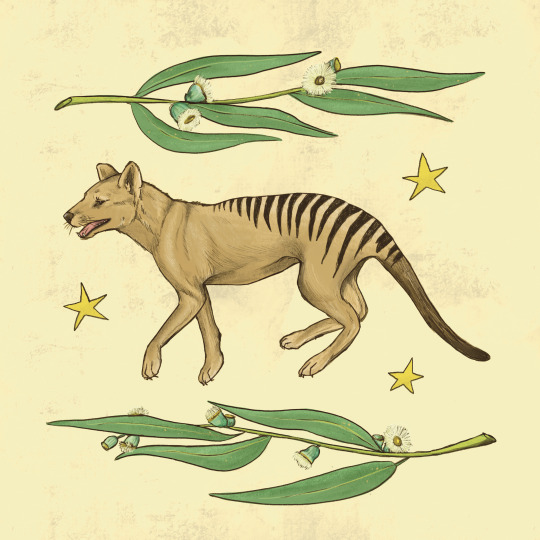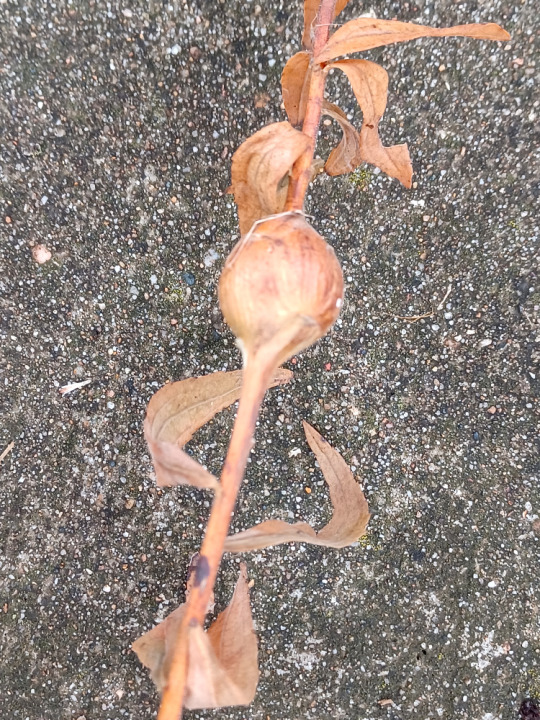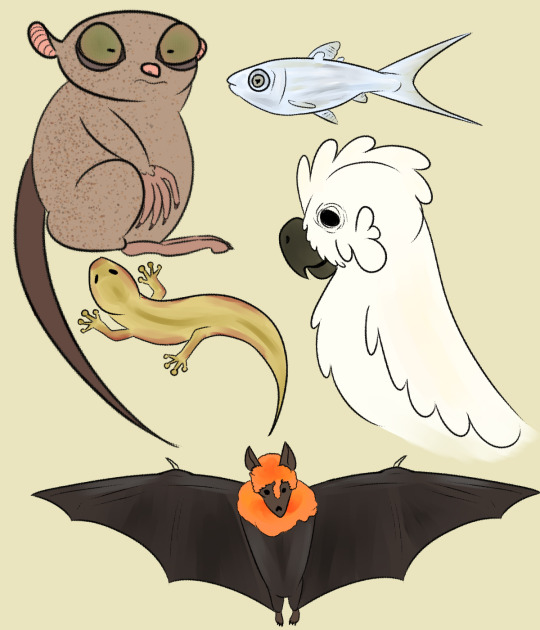#native animals
Text

A little thylacine :)
#art#illustration#tasmanian tiger#thylacine#drawing#artists on tumblr#illustrator#illustrative#sketch#procreate#digital art#artist#sketchbook#drawings#extinct animals#native animals#tasmania#tasmanian blue gum
1K notes
·
View notes
Text
Check out this Pileated Woodpecker (Dryocopus pileatus) I saw today!
14 notes
·
View notes
Text
Non-Australians are so easy to confuse all I have to do is show them a picture or video of my pet and they get so dumbfounded for some reason
13 notes
·
View notes
Text

there we go im calling this done, below are the initial sketch and underpainting


#cockatoo#raven#crow#native animals#australian natives#my art#knife cut it out#my oc#other peoples ocs#acrylic#painting#traditional art#acrylic painting
16 notes
·
View notes
Text
youtube
Brown bears, wolves and bison are returning to Europe! Nature and biodiversity is bouncing back!
We are in Bulgaria filming in the Rhodope mountains, one of the most biodiverse places in Europe.
We are here with the Rewilding Europe team to show you why reintroducing these animals back into these natural ecosystems is so important.
Rewilding is essential to maintaining the balance of nature, and ensuring the survival of all species.
Share this video if you want to see more rewilding efforts around the world!
You can learn more about Rewilding Europe here: https://rewildingeurope.com/
Some of the video clips in this film belong to Rewilding Europe, Rewilding Portugal and João Cosmen and Bruno D’Amicis from Central Apennines.
See more on Instagram-
/ goinggreenmedia
Join the Going Green Facebook Page-
/ ggreenmedia
Learn more about the Nick Maughan Foundation- https://nmf.org/
00:00-00:50 Intro
00:50-02:28 What is Rewilding?
02:29-07:27 Exploring With Rewilding Europe
07:28-08:15 Outro
#rewilding #bison #nature
#Going Green#solarpunk#rewilding#europe#Rewilding Europe#native species#native animals#brown bear#wolf#bison#reintroduction#Bulgaria#Rhodope mountains#Youtube
7 notes
·
View notes
Text

I volunteered with the Ozark Rivers Audubon Chapter doing some invasive species removal at the Nature Center today. One of the other volunteers found something really cool--this gall! It's on a Solidago species, possibly S. gigantea. And while I've primarily seen galls on oaks (Quercus) made by various gall wasps (Cynipidae), this one is actually made by the goldenrod gall fly (Eurosta solidaginis), a native species. So today I learned something new!
Plant galls are an immune response to attacks by pathogens and predators ranging from viruses and fungi to insect larvae. In the case of gall wasps and gall flies, the larvae induce gall growth; it's thought that they exude a chemical that triggers the galls, though the physical damage from chewing may also play a part. Because the larvae are active when plants are exhibiting a lot of growth, the galls can expand quite quickly. The larvae then live inside the gall until they're ready to molt into their adult form.
#nature#insects#wasps#flies#goldenrod#plants#arthropods#invertebrates#native species#native plants#native animals#botany#biology#ecology#parasitism#parasites
54 notes
·
View notes
Text

Climbed a tree to get this photo of an Australian goanna. Luckily with a long lens, it’s easy to get near enough for a decent photo without disturbing the creature you’re admiring — not even sure he/she knew I was there. I think this is a very young Perentie goanna (Varanus giganteus), the largest goanna native to Australia. I can’t be super sure.
22 notes
·
View notes
Text
hazeltailxo on ig
#mine#squirrels#squirrel#animal video#animal videos#wildlife videos#wildlife#native wildlife#animal#animals#native animals#trees#hazeltail#hazeltailxo#hazeltail official
9 notes
·
View notes
Photo

In honor of Filipino heritage month, I aim to learn more about the culture where my mom's (and dad's dad) family grew up in.
My mom is from the Philippines and grew up there, and my dad's dad grew up there. My dad has visited twice, and I have never been.
I have family that live there and family FROM there, yet I never engaged with the culture all too much because this is sadly America, lol.
Day 3: Philippine Animals
Here we have the Philippine tarsier, bangus/milkfish, butiki, Philippine cockatoo, and the Philippine fox bat.
The Tarsier: A primate that once used to be widespread, now mainly resides in the Philippines. Some anthropologists (and some zoologists) claim it to be more related to a lemur, some say it's more related to your average monkey. Others believe it's a whole species entirely and cannot be classified as either. Regardless, the creatures are nocturnal, with large eyes that take up most of it's head. They are insectivorous, but are known to eat lizards, small snakes, and small bats. Conservation status is critically endangered, with possible threats of extinction due to them not being able to breed in captivity very successfully.
Milkfish/Bangus: The last known Chanidae species, referred to as the Philippine's national fish (not officially stated). Despite this (unofficially) being the Philippines national fish, there are many ways they farm, cook, and process the fish. These are quite an easily accessible food, although they are known to be on the bonier side anatomically. They live about 15 years and in schools around reefs, although migrate to fresh water as "teenagers" before returning to sea to reproduce. Conservation status is least concerned, as they do seem to spread out almost everywhere.
Butiki: These plump lizards are widespread throughout Southeast Asia. They have delicate skin and are usually found in shades of yellow-brown with hints of red/orange. My mom's mom referred to them as "Jesus lizards", as they usually come down to "kiss the floor" (make ticking sounds to communicate) at around time of prayer in people's homes (which they can live in). She also said gamblers would keep a butiki in a matchbox to bring them good luck in gambling, and when the lizard died, they stopped gambling; but in their gambling time, it is said they always won. Conservation status is least concerned, as they are spread throughout Southeast Asia, and are even considered invasive in Hawaii.
Philippine Cockatoo: Not much is known about these native birds. They are a yellow-white with hints of possible yellow and red in their feathers. They are usually a foot long with a slightly over-half wingspan. They sound like most typical cockatoos but much quieter. Their conservation status is critically endangered due to the cage-bird trade and have terribly small populations in the wild in certain areas of the Philippines and due to this, not much is known. Luckily, conservation is possible.
Philippine Fox Bat: These large bats are probably the largest species of bat in the entire world. They are herbivorous, usually consuming things like fruits (mainly figs) and leaves. They are nocturnal and sometimes engage with each other to mate and/or fight, but most times they are solitary. Not much is known about their reproduction, other than most times the babies appear around late spring early summer. They are hunted quite frequently by predators and carry bat-related parasites and diseases, causing humans to hunt and kill them. Conservation status is endangered, but luckily not critically.
Follow me here: www.instagram.com/helliondraws… , TikTok (HellionAmaruq), hellionamaruq.tumblr.com/ , twitter.com/HellionAmaruq www.reddit.com/user/HellionAma…
Commissions: hellionamaruq.carrd.co/
#art#digital#digital art#philippines#philippine animals#bat#tarsier#milkfish#philippine cockatoo#native animals#philippine fox bat#filipino heritage month#butiki#animals
8 notes
·
View notes
Photo

Animals Native to Japan
7 notes
·
View notes
Text


hello to the guy that lives in my garden
#land mullet#it’s breeding season for them and they’ve been having sex in the compost bin every day for like a week#reptiles#skink#australian animals#native animals#australian reptiles#wildlife#wildlife photography#animals
2 notes
·
View notes
Text
Watching the Green turn to Grey
When I moved into the area I live in, there was a huge field where I would see Kangaroos when we drove by. I saw black and red Cockatoos flying around. It was amazing. Right here in suburbia. Imagine, an entire mob of kangaroos. Little Joeys bouncing around, sometimes watching a pair fight. It was magical.
Never have I ever been able to see Kangaroos so many times in one place. I could watch as the mob grew and moved for two years.
Now they are bulding a fast food precinct in the field. Gravel and concrete have taken over a beautiful green environment and stolen a home from a bunch of beautiful creatures. For a fast food precinct across from a huge mall where one already exists.
A few doors down from where I live, there was a huge gum tree. Three stories high and beautiful. Home to flocks of birds. I had to watch as they ripped it out. I was in tears watching a cockatoo fly to tho the trunk and not understand it's home was gone. They ripped it out and took it away. This beautiful old tree. They have not planted a new one in its place.
What was once a beautiful green place where I live, a beautiul mix of suburbia and bushland is now being just wiped clean. Trees and animals are dissappearing for the drabness and dullness of concrete slabs and metal structures.
There is no work on creating better public transport so less parkings are needed, creating native gardens instead of random squares of green grass. There is no beautiful architecture or ecological or greener initiatives. It's merely about throwing things up to supposedly help the community (without actually planning for the future, it is never planning for the future but putting band aids on issues already there) without worrying about our future. About the native animals future.
We know what is coming. We know the issues that are arriving and yet more and more of our green space is being taken away for governments to make more money.
It makes me furious, worry and rage at what future the next generation will have to do with. Because the current one in charge seems to be putting the burden on to the general public without actually trying themselves. They take and take. And give nothing back to the ground beneath them.
It is just heart wrenching.
And right now, the only power I have is to grow my own greenery. To research and fight as a civilian. Sign petitions and grow habitats in my own backyard for those pour displaced feathered animals. It is not enough but it's all I can do.
#enviromental#anger#ecological#native animals#environmental destruction#climate#climate crisis#ramblings#the world around me
2 notes
·
View notes
Text
youtube
Colorful California native plants cover this yard attracting pollinators and birds. Ken converted his monotonous lawn in the front of his Chico, California 1960s home to gain wildlife habitat and lower water use. He also realized a reduction in maintenance. His choices of California native plants provide habitat, all season color, varied textures for interest, and evergreen screening.
Native plants provide nurturing habitat for birds, pollinators, and other wildlife. Many native plants need less water, fertilizer, and maintenance than plants from other climates.
Ann Elliott of Mt. Lassen Chapter - California Native Plant Society (CNPS) videoed several gardens in spring 2018 to share the beauty, variety, and enjoyment of including California native plants in landscaping. Find the other videos by searching for “Virtual Native Plant Garden Tour” or by subscribing to Ann’s YouTube channel. Find more information on California native plants and gardening with them at:
https://mountlassen.cnps.org/
https://www.cnps.org/
http://calscape.org/
#Ann Elliott#solarpunk#USA#California#native species#native plants#native flowers#flowers#plants#Chico#native animals#native insects#native bugs#California Native Plant Society#Mt. Lassen Chapter#Youtube#garden#gardening
2 notes
·
View notes
Text
Happy National Moth Week!

Here's a Cecropia moth wing I found a few weeks ago. Cecropia moths are the largest native moth in North America!
2 notes
·
View notes
